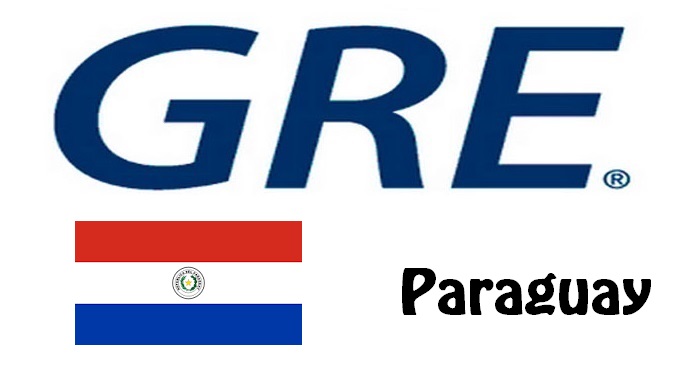GRE Testing Locations
Decided to take GRE exam? Now it is time to determine where to take the test. This site provides a full list of GRE testing centers in Paraguay, among which, you can choose one that is nearest to you. Good news is that the following GRE test locations in Paraguay offer both GRE general test and the GRE subject tests.
Paper-delivered Test Centers for General Test
| Code | Name |
| 10015 | Ascuncion, CENTRO CULTURAL PARAGUAYO AMERICANO |
GRE Test Dates
There are two types of test format offered by the test maker – ETS: Computer-delivered and Paper-delivered GRE general tests. For computer based test format, the GRE General Test is offered year-round on a continuous basis, and available for registration on a first-come, first-served basis. For paper based general test, testing is available three times per year. The following test dates apply:
| Test Dates for Paper Based | Deadlines for Registration | Scores Available |
|---|---|---|
| November 09, 2019 | October 4, 2019 | December 20, 2019 |
| February 1, 2020 | December 27, 2019 | March 13, 2020 |
GRE Subject Tests in Paraguay
The GRE Subject Tests are available on paper based only. In all GRE test centers throughout the world (both inside and outside United States), the exam is available three times a year. The three test dates are:
- April
- September
- October

More about Paraguay
Jesuit State, Independence and the Chaco War
Paraguay arose in the area east of Paraguay from Asunción, founded in 1537, which was the focus of Spanish settlements in La Plata until 1617 – until the establishment of the internal customs border between the inner provinces facing the Pacific coast and the area around Buenos Aires. In the Paraguay area there had been Jesuit- led Guarani reductions since 1609(mostly in the then part of Paraguay, now the Argentine province of Misiones). The closed location and the low level of European immigration led to a close bond between the Spaniards and the local Guaraní. The mestizos that arose from the merger gradually pushed the Europeans and Indians into the background. For them, next to Spanish, Guaraní was the colloquial language. In their reductions, the Jesuits pursued the peaceful Christianization of the Guaraní. From this arose the “Jesuit State” on the middle reaches of the Paraná and Uruguay, which however neither comprised a closed territory nor was sovereign. In the reductions, however, the Jesuits had extensive self-administration. Their organization was based on Spanish colonial legislation and adapted to the customs of the Guaraní. For this, who were exempt from state tribute payments were subject to a general duty to work. The reductions through trade came with economic prosperity Mate tea. The Jesuits, who in the middle of the 18th century supervised thirty reductions with around a hundred thousand Guaraní settled, had their own militia for a time, with which they fended off the slave hunts of the Bandeirantes of São Paulo. When the Jesuits were expelled in 1767, the Indians, who had never fully settled down, dispersed; the reductions placed under civil administration lapsed.
Since 1776 Paraguay became dependent on the newly founded viceroyalty Río de la Plata with the capital Buenos Aires. After the May Revolution of 1810 in Buenos Aires, the province of Paraguay rose against Spanish rule and at the same time successfully defended its independence from Argentina. José Gaspar T. Rodríguez de Francia, who ruled as dictator from 1814-40, maintained the independence of inland Paraguay against the claims of Brazil and Argentina through strict economic autarky and political isolation. On Francia followed in the same position of power his nephew C. A. López who pursued a policy of economic and political opening to the outside world and modernization. This modernization particularly affected the military, as the claims of the expanding neighboring states Argentina and Brazil threatened Paraguay. With a well-trained army Paraguay fought against the Argentine dictator J. M. de Rosas (1845–52) as well as against Brazil (1855) and Uruguay (1858). After López’s death (1862) his son, F. S. López, President. He tried to gain access to the sea, but the war against Brazil, Argentina and Uruguay (war of the Triple Alliance 1865-70) ended for Paraguay with a fiasco: The country lost about 70% of its population and about half of its usable territory. Paraguay only recovered from the economic and population-related consequences of the war in the 20th century.
A national assembly passed a liberal constitution in 1870, and in 1887 the traditional parties of the liberals and conservative Colorados were formed. The Colorados determined politics until 1904, the Liberals until 1934. But time and again unrest and coups d’état by rival officers and parties hampered political and economic development. Under the presidents Eduardo Schaerer (1912–16; * 1873, † 1941) and Eligio Ayala (1924–28; * 1879, † 1930) the domestic political situation consolidated.
After heavy losses Chaco War against Bolivia (1932-35) Paraguay received most of the disputed Chaco boreal awarded. The domestic political situation was shaped by the change of dictatorial governments: Under the government of Colonel Rafael Franco (1936-37; * 1896, † 1973), a state structure based on fascist models began, under that of General Higinio Morínigo (1940-48; * 1897, † 1983) created an authoritarian constitution and declared war on the Axis powers in 1942.

